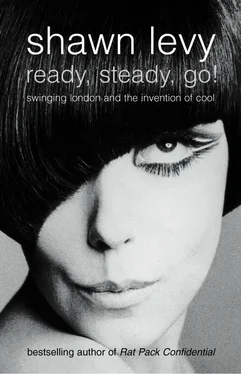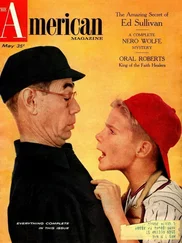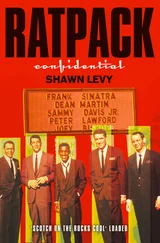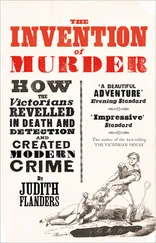'This was very new indeed,’ remembered Alexander Walker, then reviewing films in the Evening Standard. ‘ Very quickly, an atmosphere of mockery and cynicism regarding public life and “our betters”, to use the Somerset Maugham phrase, was created.’ But in spreading, satire, of course, lost its bite. Peter Cook, the boy wonder, the sharpest and, at first, most successful satirist, watched with chagrin as something that had begun as an undergraduate impulse to mock and deflate became an institution: ‘The heyday of satire was Weimar Germany,’ he reminded people, ‘and see how it prevented the rise of Adolf Hitler!’ But if his invention didn’t crush the status quo, it certainly knocked it back on its pins for long enough so that several similarly subversive new strains of culture could emerge.
In the context of these social and moral upheavals, Bailey’s photographs seemed particularly vital. One of the things that John Parsons had surely noticed was that Bailey’s work had more of a sense of movement and energy than that of most of the British fashion photographers who’d preceded him. In part it was the young man’s inherently brash attitude, which bled into his pictures to create out of his models seemingly normal human beings, not inaccessible mannequins removed from the world of the viewer. ‘Bailey was user-friendly,’ remembered sometime snapper Dennis Hopper. ‘The models seemed to love him. A lot of fashion photography is how well you get along with people. And Bailey had a good bedside manner. He seemed to be able to be on the level with a lot of different types of people.’
But in part, too, it was Bailey’s affection for the work of American masters like Richard Avedon and Irving Penn, whose photos he studied for technical details, small effects and emotional impact. By the spring of ‘61, Bailey had taken the lessons he had learned from his masters and put them to work in a new idiom. He had acquired a 35mm Pentax camera, which liberated him from the tripod and allowed him to shoot his models in a kind of erotic dance (imitated in Blow-Up and the Austin Powers films). ‘He was sort of like El Cordobés when he worked,’ remembered Terry O’Neill, who took iconic photos of the expressive, energetic Bailey conducting a fashion shoot.
Away from the studio, in environments such as the grandstands of a racetrack or the busy streets of a city, Bailey’s new cameras allowed him to shoot wherever the fancy struck; Vogue fashion editor Marit Allen recalled jumping into ‘Bailey’s brand-new Jaguar E-Type and taking off on the M1 to go to Liverpool to photograph girls in clothes at the Cavern because it would be fun, it would be a riot, we should do that maybe. And just picking up girls when we got there because we liked them.’ The result was extraordinarily fresh imagery—a whole new feel for Vogue, for the men’s magazine Man About Town and for advertising clients such as El Al, BOAC, Fortnum & Mason and the synthetic fabrics manufacturers Acrilan and Terylene.
As for Bailey, it all amounted to a ticket to a new life. He always joked about his motives for signing on with Vogue – ‘It did allow me to pursue my three main interests: photography, women and money’ – and probably he told a lot of truth in the jest. But he also relished the opportunity to work at a machine-gun pace – he developed a reputation during these years as a workaholic, and never lost it – and to try new techniques once he’d earned the confidence of his editors. ‘Fashion is a good way to explore photography,’ he explained. He wasn’t pretentious about it exactly: ‘I didn’t really think about it as art. It just seemed a nice thing to do. I’ve never really been clear what art is. I couldn’t believe it when Vogue gave me a contract to photograph women and get paid for it.
‘They – from Mars or wherever they are – said I wouldn’t be a fashion photographer because I didn’t have my head in a cloud of pink chiffon,’ he bragged. ‘They forgot about one thing. I love to look at all women.’ As his stock rose at Vogue and elsewhere, he became a kind of craze – the cute Cockney who took such wonderful shots. ‘Up at the Vogue studio,’ he remembered, ‘one of the editors actually patted me on the head and said, “Doesn’t he speak cute?”' (And he added with a characteristic giggle, ‘Three years later, the managing director was asking me if I could move my Rolls so that he could get his Rover out.’)
It was, in many ways, a calculated posture: Dick Fontaine, who grew friendly with Bailey over the years, noted, ‘He’s a deeply serious person, and I would say that to him, and he’d say, “Fuck off. I just wanna make money, have a good time, have dinner, drink a lot, fuck a lot.” All true, of course.’
Bailey used his reputation for lower-class cheek to his advantage. ‘All the posturing with the editors – “I’m not going on that gig!” – was always to do with something else,’ remembered Fontaine. ‘Bailey just would be the court jester, playing the trickster.’
And he cavorted as much with his subjects as with anyone else. Within a year of Bailey’s arrival at Vogue, jazz singer and pop critic George Melly sat for him, and he recalled the excited atmosphere the photographer brought to the session: ‘Here was this unposh, blatantly heterosexual young man dressed all in black … David made no attempt to disguise his Cockney accent – I suspect he may even have put it on a bit – and jumped around like a grasshopper taking what he called “snaps” of us from every angle, rather than setting the whole thing up in a stiff, formal way like most fashion photographers did in those days. I remember he used lots of funny expressions when taking pictures like, “Lose that arm, Chief.”’
Melly was in the studio to be photographed with one of the magazine’s newest models as part of a feature Bailey was shooting for the ‘Young Idea’ section. The idea for the feature was to photograph the new girl in a variety of outfits alongside a number of men who were just making a splash on the London scene: Kenneth Tynan, Peter Cook, Dudley Moore, David Frost, Vidal Sassoon, Terence Donovan and Stirling Moss included. There was a problem, though: Claire Rendlesham, Lady Rendlesham, the magazine’s imperious editress, didn’t want to use the girl he had in mind. Bailey fought her and finally won out on the condition that he would reshoot the feature no questions asked if, as Rendlesham feared, it didn’t turn out well enough.
The girl was Jean Shrimpton, and, soon after Bailey photographed her with all those up-and-coming men, she would transform in his hands into virtually the first model in England to become famous solely on the strength of posing for pictures. ‘Prior to then,’ journalist Peter Evans remembered, ‘a model was an anonymous creature. One or two might have had a name but mostly because they were society girls. The top models were either married to or were themselves aristocrats; they could afford to do it because it wasn’t a highly-paid job.’
Shrimpton wasn’t well-educated or rich or from an old family. She had attended Lucie Clayton’s modelling school, which she entered after indifferent tuition at the Langham Secretarial College. Barely 18 years old when she first set eyes on Bailey, she was, in her own phrase, ‘waifish, coltish and cack-handed’, but she was a stunning natural beauty – if uncultivated – who had been turning heads in her native Berkshire since childhood. She was only slowly making her way into the modelling world, but it would be hard to imagine that someone as perspicacious as Claire Rendlesham didn’t see her obvious potential.
Bailey noticed it right away in late ‘60, when he walked into a Studio Five shoot that Brian Duffy was doing with Shrimpton for Kellogg’s cornflakes. ‘I looked in his studio and saw this vision,’ Bailey remembered. ‘He was taking the picture against a blue background. It was like her blue eyes were just holes drilled through her head to the paper behind.’ Afterwards, he had a chance to ask Duffy who this fabulous girl was and the older man warned him off: ‘Duffy said, “Oh, she’s too posh for you.” I said, “Well, we’ll see about that, mate.”’
Читать дальше












